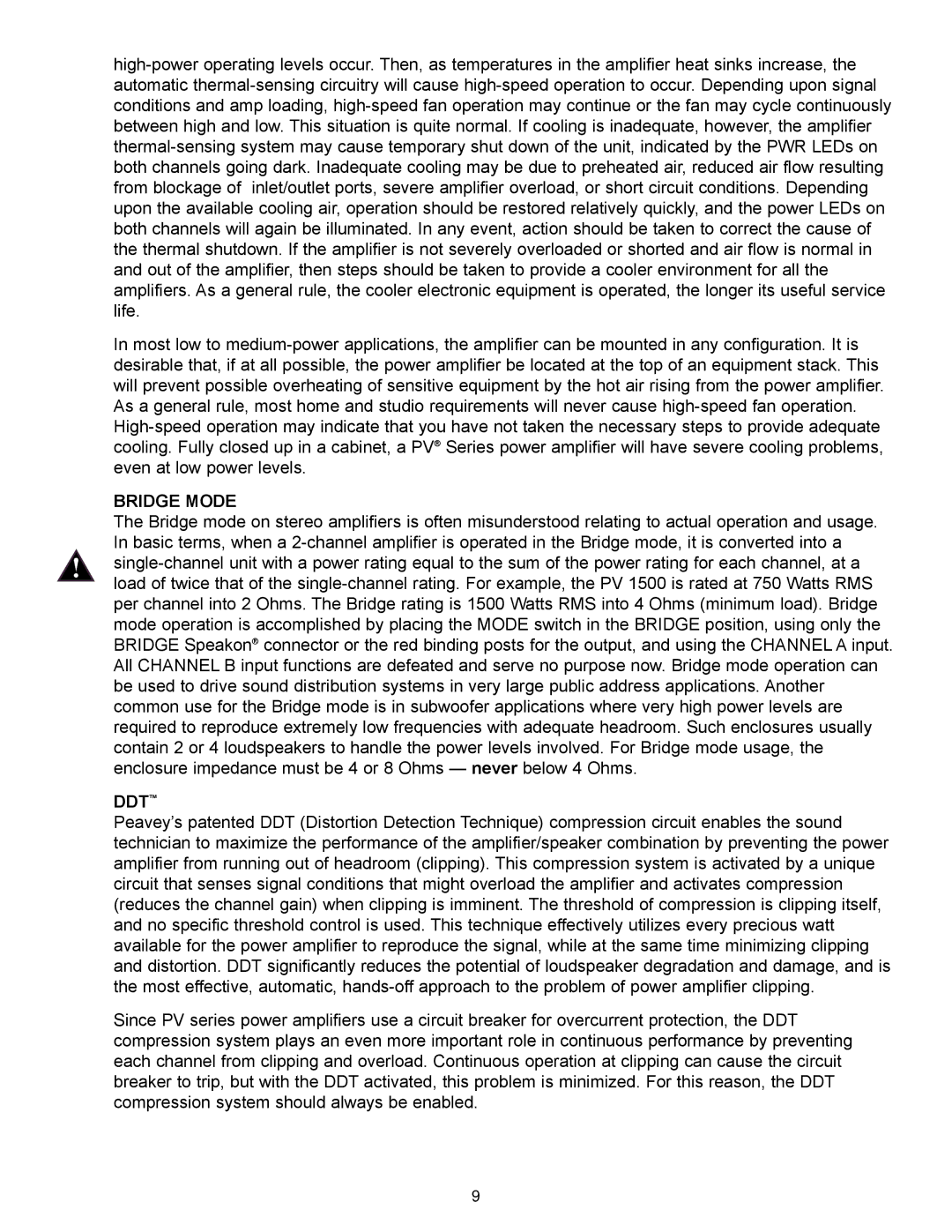PV Series specifications
Peavey is a well-known name in the music industry, particularly recognized for its range of audio equipment. Within its extensive portfolio, the PV Series stands out as a line of amplifiers and speakers that have earned a reputation for delivering high-quality sound performance and robust build quality. The PV Series is designed to cater to a variety of audio needs, making it an essential choice for musicians, sound engineers, and event organizers alike.One of the main features of the PV Series is its impressive power handling capacity. The PV amplifiers are built to deliver high wattage output, ensuring that even in large venues, audio enthusiasts receive clear and powerful sound. This capability is complemented by the series' advanced speaker design, which includes high-efficiency drivers and reinforced construction. Whether for live performances, studio applications, or installation in permanent venues, the PV Series maintains clarity and fidelity at both low and high volumes.
Another defining characteristic of the PV Series is its versatility. The range includes powered and passive speakers designed to cater to a wide spectrum of sound reinforcement needs. The powered speakers offer built-in amplifiers, eliminating the need for external power sources, which simplifies setup and transportation. On the other hand, the passive speakers can be paired with various amplifiers to suit specific performance requirements.
Peavey’s unique technologies are also pivotal to the PV Series’ acclaim. The series benefits from proprietary innovations such as the DDT (Dynamic Drive Limiting) technology, which helps prevent distortion by monitoring signal levels in real-time. This ensures that users can push their equipment to the limit without risking damage to their speakers, providing peace of mind during critical performances.
Durability is a hallmark of the PV Series. The enclosures are made from high-quality materials designed to withstand the rigors of travel and use. Features such as reinforced corners, heavy-duty grills, and weather-resistant finishes make these products suitable for both indoor and outdoor use.
Finally, the PV Series offers an appealing price-to-performance ratio, making high-quality audio accessible to a wider range of users. Whether one is a seasoned professional or a budding enthusiast, the Peavey PV Series provides reliable and powerful audio solutions that stand the test of time. With a combination of power, versatility, and durability, it continues to be a preferred choice in various audio environments.
